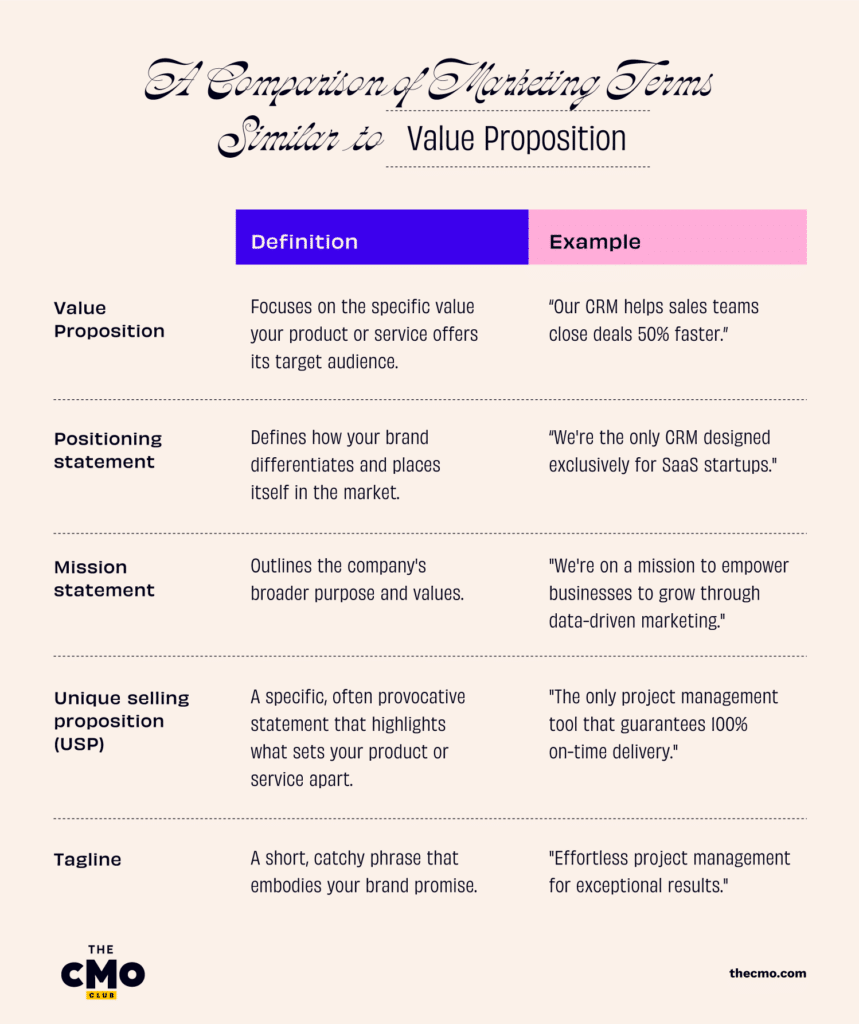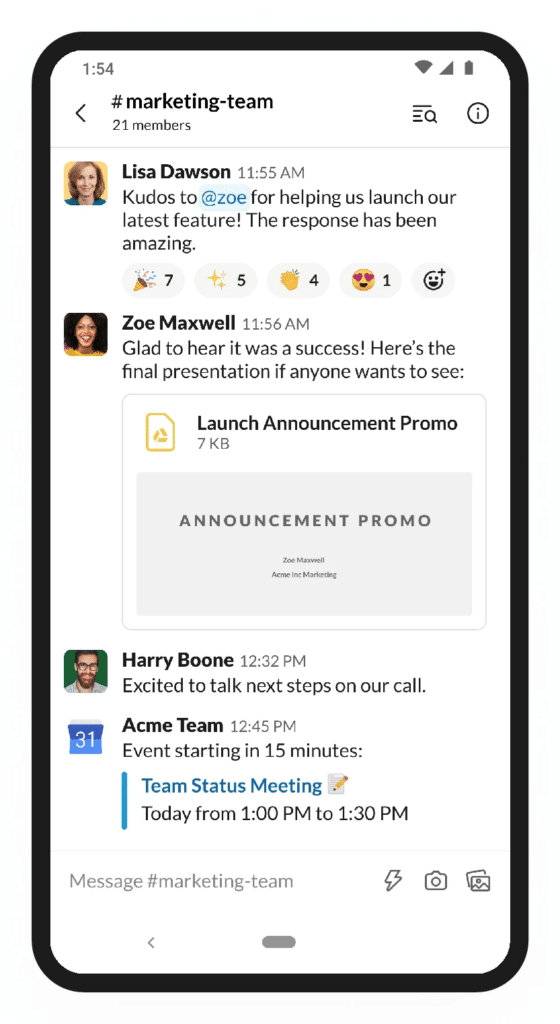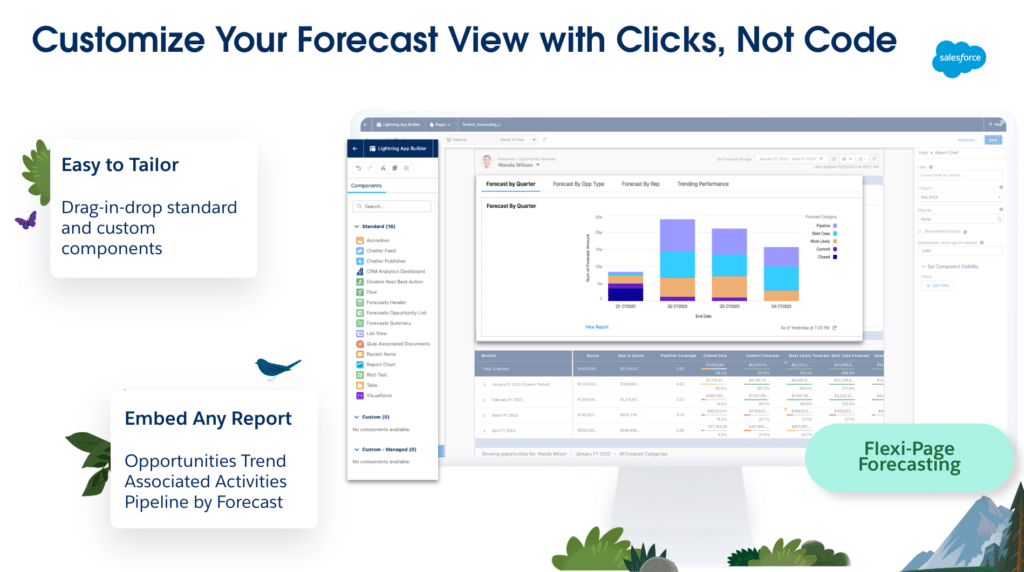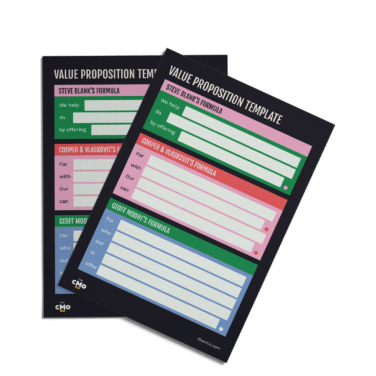A value proposition is the key benefit you offer customers. Get it right, and everything else in your marketing strategy falls into place.
Easier said than done, sure, but the challenge is in distilling the core of what you offer into a clear, concise message that doesn't sell your product short or get bogged down with too many details. With the help of a framework, you can write a compelling value proposition that speaks directly to your audience.
What Is A Value Proposition?
A value proposition is a clear, brief statement that articulates the unique benefits your product or service offers potential customers. It addresses their pain points by clearly communicating how your solution solves them.
In account-based marketing (ABM), your value proposition should be tailored to resonate with the key decision-makers within your target account. It enhances ABM campaigns by:
- Providing personalized communication that resonates with key buyers
- Guiding potential customers through a customized ABM funnel
- Aligning clear communication of unique benefits
- Increasing engagement and conversion rates
- Impacting key ABM metrics including engagement, deal size, sales cycles, and return on investment (ROI)
It’s worth noting that there are also a variety of different value proposition types that CMOs can use, each serving a different purpose. These include:
- Productivity: How your product or service helps users work more efficiently, saving time and resources.
- Profitability: How your solution directly increases revenue or reduces costs.
- Image: How your high-quality product offering enhances the customer's reputation, prestige, or overall brand perception.
- Experience: Emphasizes the exceptional customer experience your product or service provides each of your customer segments.
- Convenience: Explains how your solution simplifies processes, reduces friction, and makes your customer’s life easier.
Value proposition vs positioning statement

Although both “value proposition” and “positioning statement” are easily confused, they differ significantly. A value proposition zeroes in on the specific benefits your product or service offers your target audience, while a positioning statement defines how your brand is differentiated in the market.
For example, a value proposition might read as:
"Our CRM helps sales teams close deals 50% faster."
Alternatively, a positioning statement could be:
"We're the only CRM designed exclusively for SaaS startups."
Value proposition vs mission statement
Your value proposition is an explicit promise of the value you deliver to customers, whereas your mission statement outlines your company's broader purpose and values.
A value proposition might say:
"Our marketing automation platform helps you convert leads into customers."
However, a mission statement could be:
"We're on a mission to empower businesses to grow through data-driven marketing."
Value proposition vs USP vs tagline
A value proposition comprehensively communicates the key benefits and unique attributes of your product or service. For example:
“Our project management solution helps teams deliver projects on time and under budget by streamlining real-time communication and automating workflows.”
Alternatively, a unique selling proposition (USP) is a specific, often provocative, and memorable statement that highlights what sets you apart. It could say something like:
“The only project management tool that guarantees 100% on-time delivery.”
A tagline is a short, catchy phrase that embodies your brand promise. For instance:
“Effortless project management for exceptional results.”
How To Write A Good Value Proposition
Writing a compelling value proposition can be done in five steps, starting with uncovering your biggest customer pain points.
1. Identify target customer pain points
Whether you gather customer data through direct interviews, surveys, or you purchase third-party data based on your ideal customer profile, uncovering specific customer challenges you can directly speak to is the first step.
As you carry out market research, look for challenges, market trends, frustrations, or 'moments of struggle' your product is built to address. At this stage, analyze the data to find patterns and prioritize the most common, severe pain points your ideal customer deals with.
Say you sell subscriptions to your product information management platform (PIM). Through your research, you discover your target accounts struggle with a few challenges:
- Managing product data consistently across multiple sales channels and systems
- Dealing with costly errors and frustrations with manual data entry
- No centralized way to manage the constant product data changes and listing requirements
Those insights are powerful. Now you can craft a value proposition as targeted content that addresses centralizing product data management, ensuring data parity, and automating data updates across channels.
2. List the benefits of your product
As you think through your value proposition, don't only go as far as listing your product's best features. As the CMO, you need a vivid picture of the benefits your features deliver.
Continuing with the PIM example, the benefits you offer may be:
- Centralizing product data management in one platform
- Ensuring the consistency and accuracy of product information across channels with customizable data fields
- Automating product data syndication and distribution
- Improving data governance and quality control
With your benefits clearly laid out, it becomes easier to uncover the value in those benefits to incorporate into an effective value proposition.
3. Describe the value in those benefits
Going beyond simply listing features and benefits is an essential step in crafting a strong value proposition. Rather than simply stating, "Our software automates repetitive tasks with our automated data update tools," emphasize the value of the benefits your features offer your ideal customer.
Here’s an example of going beyond the benefits and emphasizing their value to your customer:
“Deliver exceptional customer experiences, accelerate operational efficiency, and effortlessly scale your retail business with one central source of truth.”
4. Connect the value to the pain points
Once you’ve laid out the value your customers get from your solution, take it one step further by connecting the value to the pain points.
Here's how you can take the value prop in step three one step further:
"Centralize your product information and secure data accuracy and consistency across all channels with automated product data management that makes it effortless.”
In case you get stuck when you’re connecting value to relevant pain points, an easy way to arrive at a strong value proposition is by using a simple formula:
We help (X) solve (Y) by doing (Z).
Be sure to map your solution's features directly to the outcomes your customers care about most. Keep in mind businesses only ever make a purchase because of any combination of the following:
- To increase revenue
- To decrease costs
- To manage risk
Use these as a starting point if you’re stuck on what broader pain point your value proposition should speak to.
5. Differentiate yourself
Your company’s value proposition needs to highlight the unique aspects of your solution. Do this by thinking through a few specific questions:
- How does our solution enable customers to gain a competitive advantage in their markets or industries?
- What are the long-term strategic benefits our solution provides that align with our customers' broader business objectives and vision?
- In what ways does our solution help customers enhance their brand reputation, customer loyalty, or market positioning?
- How can we quantify the tangible business impact and ROI our solution delivers, beyond just the immediate benefits?
For example, if your fellow PIM competitors in the retail industry offer a one-size-fits-all solution, emphasize how your product is highly customizable and purpose-built to fit your customers’ existing systems.
Elements Of A Good Value Proposition
First, let's address a common question:
How long should a value proposition be?
The sweet spot is typically one to three sentences, or around 25-50 words. Any longer, and you risk losing your audience's attention. Additionally, your value proposition statement should be:
- Clear: Use simple, straightforward language that your ideal customer understands.
- Relevant: Speak directly to your target audience's needs and pain points.
- Unique: Differentiate yourself from competitors by highlighting your distinctive benefits.
- Measurable: Quantify the value you provide, using specific numbers or percentages when possible.
Identifying the target market
A strong value proposition is built on understanding who benefits most from your product or service. This typically involves researching demographic, psychographic, technographic, and behavioral data that will inform your marketing efforts.
Determining the value
Beyond benefits and features, understand how your product offering provides value—preferably in a measurable way.
Communicating the value to customers
Resonating with your target audience's needs and desires means stepping into their shoes to empathize and speak to what they value most.
Value Proposition Examples
Consider some examples of great real-world value propositions:
1. Slack
“Slack is the productivity platform that empowers everyone with no-code automation, makes search and knowledge sharing seamless, and keeps teams connected and engaged.”
Value proposition: “Slack is on a mission to make people's working lives simpler, more pleasant and more productive. It is the productivity platform for customer companies that improves performance by empowering everyone with no-code automation, making search and knowledge sharing seamless, and keeping teams connected and engaged as they move work forward together. As part of Salesforce, Slack is deeply integrated into the Salesforce Customer 360, supercharging productivity across sales, service and marketing teams. To learn more and get started with Slack for free, visit slack.com or connect with us @SlackHQ.”

Why it's powerful: Slack's value proposition emphasizes the platform's ability to streamline work processes and improve team communication by providing a single, centralized space for collaboration. By highlighting the transformative power of their solution, Slack appeals to businesses looking to boost productivity and efficiency.
2. Dropbox
“Go from idea to done with Dropbox.”
Value proposition: “Save time, collaborate seamlessly, and deliver work faster on a platform that works with your existing tools. Dropbox helps you finalize video, image, and audio projects without the hassle. Plus, edit PDFs, share trackable document links, and get agreements signed quickly—all without leaving Dropbox.”

Why it's powerful: Dropbox's value proposition focuses on the essential benefits their target audience seeks: save time, collaborate, and work faster. Simple, but by addressing these key pain points and emphasizing flexibility, Dropbox positions itself as a reliable solution for businesses prioritizing collaborative, fast work.
3. Salesforce
“We’re Salesforce, the Customer Company.”
Value proposition: “From the day we opened our doors, focus on our customers drove our every decision. It fueled our growth and powered our customers' success. We develop the technology, the partnerships, and the communities that help companies connect with customers. So that every company can become a customer company.”

Why it's powerful: Salesforce's value proposition highlights its position as the leading CRM platform and emphasizes the unification of different key business functions. By showcasing the power of a connected, integrated solution, Salesforce appeals to organizations seeking to break down silos and achieve a holistic view of their customers at scale.
Get Your Value Proposition Template
Templates serve as frameworks that save you resources because you don’t have to start from scratch. It’s no different when you’re shaping your value proposition.
Download the value proposition template by submitting your email address in the box above. It will help you brainstorm differentiation, product benefits, a value map, and more for a great value proposition that hits the mark.
Join For More ABM Insights
An effective value proposition takes into account customer needs, highlights your company’s competitive advantage, and ultimately makes it easy to understand why your product is worth buying. From there, you can use other tactics like cross selling in marketing to increase overall value.
It’s a step in your marketing strategy you shouldn’t overlook.
Subscribe to The CMO newsletter for exclusive insights and tips on how to optimize your marketing strategy and achieve measurable results.


